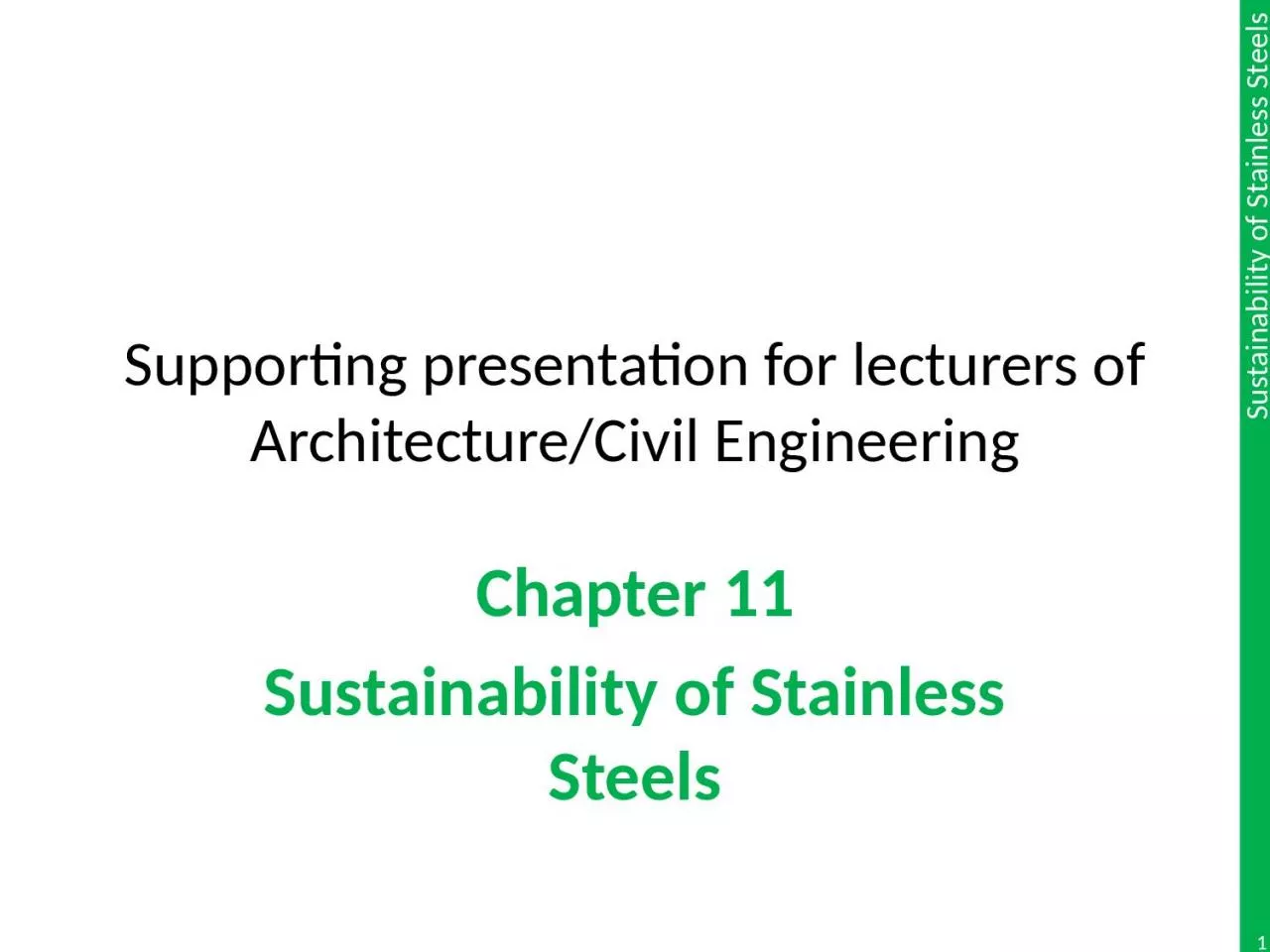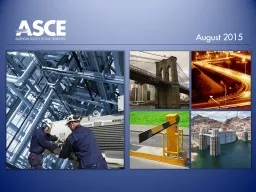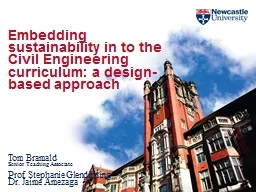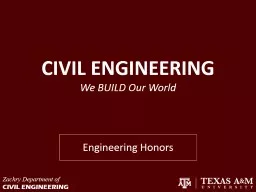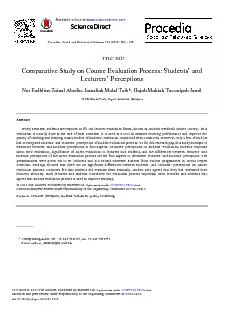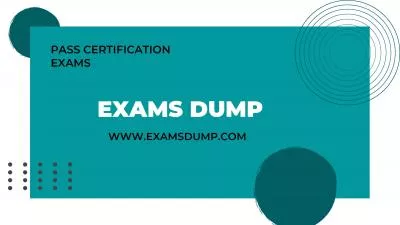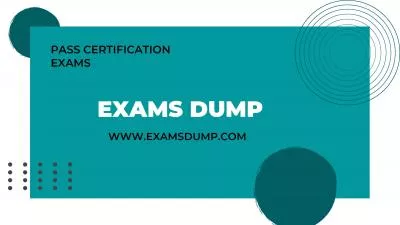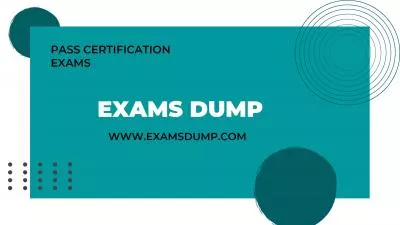PPT-Supporting presentation for lecturers of Architecture/Civil Engineering
Author : Hiphopkid | Published Date : 2022-07-28
Chapter 11 Sustainability of Stainless Steels 1 Definitions Greenhouse Gas GHG Emission Tonnes of CO2eq Tonne Steel 1 Global Warming Potential no unit
Presentation Embed Code
Download Presentation
Download Presentation The PPT/PDF document "Supporting presentation for lecturers of..." is the property of its rightful owner. Permission is granted to download and print the materials on this website for personal, non-commercial use only, and to display it on your personal computer provided you do not modify the materials and that you retain all copyright notices contained in the materials. By downloading content from our website, you accept the terms of this agreement.
Supporting presentation for lecturers of Architecture/Civil Engineering: Transcript
Download Rules Of Document
"Supporting presentation for lecturers of Architecture/Civil Engineering"The content belongs to its owner. You may download and print it for personal use, without modification, and keep all copyright notices. By downloading, you agree to these terms.
Related Documents

